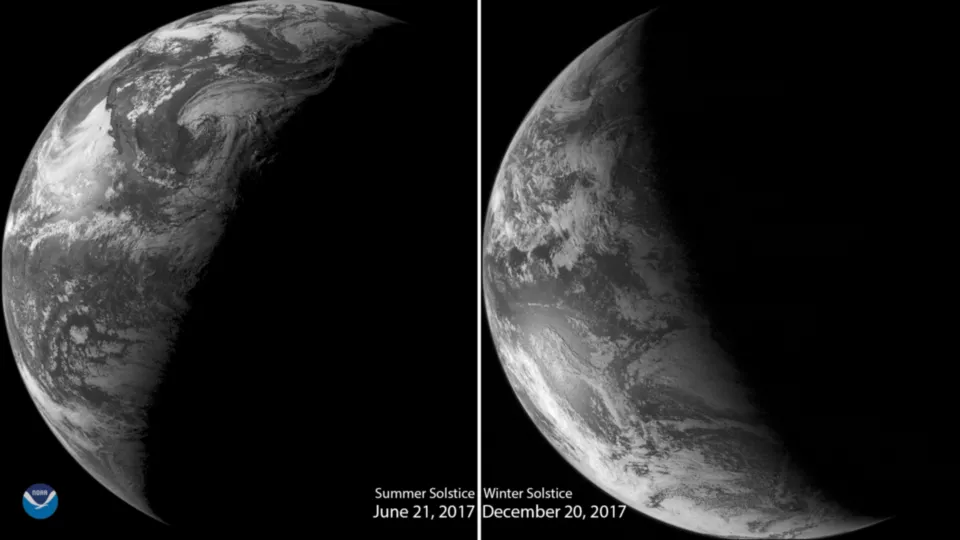
The official start of astronomical winter, the winter solstice, occurred at 11:28 a.m. Eastern Time this morning, marking the longest night of the year in Earth's Northern Hemisphere. The December solstice marks the exact moment each year when the Northern Hemisphere reaches its greatest possible tilt away from the sun. The sun's direct rays reach their southernmost position with respect to Earth's equator, along the Tropic of Capricorn, at 23.5 degrees south latitude.
This GOES-13 visible imagery compares the pattern of Earth's illumination by the sun around the winter and summer solstices. Each frame was captured at an identical time of day (2345 UTC) to illustrate the stark contrast in daylight over a six-month period. In December, the North Pole is obscured in 24-hour darkness, while the South Pole sees 24-hour daylight. The opposite occurs at each pole in June, when the Northern Hemisphere sees its shortest night of the year.
Although the winter solstice brings the shortest daylight period to the Northern Hemisphere, it’s not the day of the latest sunrise or earliest sunset. Most places in the mid-latitudes see their earliest sunset two weeks before the solstice, while the latest sunrise is not until early January. This misalignment is due to the Earth’s 23.5-degree axial tilt and its elliptical orbit around the sun.
